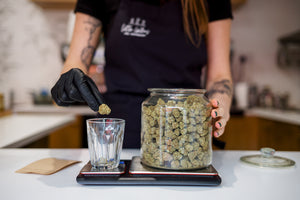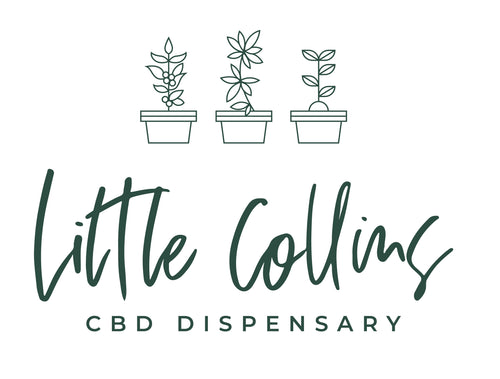What is the difference between hemp and marijuana and how do they relate to Cannabis? Hemp plants are defined as any cannabis plant that has 0.3% or less of THC, the psychoactive element of the plant which makes users ‘high’. Marijuana is the term used to classify varieties of Cannabis that contain more than 0.3% THC and can induce psychotropic or euphoric effects on the user.
Hemp is a crop which has been grown widely across the world for millennia. Hemp produces fibre which can be processed into a range of products including twine, rope rigging and nets. Oil from hemp seed is valued because of its high nutritional value.
While cannabis plants have been grown since at least the 3rd millennium BC, evidence suggests it was being smoked for psychoactive effects at least 2,500 years ago in the Pamir Mountains. Since the early 20th century, cannabis has been subject to legal restrictions.
Seventeenth-century farmers in Virginia, Massachusetts and Connecticut were legally obliged to grow hemp. Farmers who weren’t growing this plant could be fined and face jail time. The American census of 1850 documents more than 8,000 plantations of at least 2,000 acres growing hemp on an industrial basis. By the late 1800’s the auto industry was taking off and Rudolf Diesel the inventor behind the diesel engine intended his new engine to be run on hemp fuel. Henry Ford created cars entirely from the hemp. So why is it not more widely grown today?
One hundred years ago, the use of hemp was declining because of a lack of mechanisation necessary for mass production. Investors were putting their money into wood and petrochemicals. New hemp processing machines were developed in the 1930s which threatened these investments into wood and petroleum distillates. Newspapers sensationalised any story involving cannabis and a smear campaign against marijuana began in the States, creating a fear of those in the hemp industry.
So how exactly did cannabis become illegal in the United States?
There is a well-known theory that four men (newspaperman William Randolph Hearst, the DuPont family, whose company had just invented nylon, Andrew Mellon, who had significant investments in DuPont, and Harry Anslinger, commissioner of the Federal Bureau of Narcotics) conspired to halt the hemp industry by drafting the Marihuana Tax Act of 1937.
Despite an initially compelling argument made by pro-marijuana activist Jack Herer, there have since been numerous convincing points made which refute this theory. And as Brian Dunning states, cannabis hardly needed a conspiracy of Hearst and DuPont to put it out of business by the 1930s. “It had already been doomed to extinction by racism, class warfare, and a complicit government and media to feed them.”
Whether or not these men actively plotted to destroy the hemp industry, many people believe that the demonisation of hemp as a drug has damaged the environment and denied us all the ecological, industrial and recycling benefits of this crop.
Closer to home, Irish physician William Brooke O’Shaughnessy’s medical research introduced the therapeutic use of Cannabis sativa to Western medicine.
O’Shaughnessy validated folk uses of cannabis in India, discovered new applications, and ultimately recommended cannabis for various therapeutic purposes.
He established his reputation by successfully relieving the pain of rheumatism and stilling the convulsions of an infant with cannabis. He eventually popularised its use back in England in 1841. His most famous success came when he quelled the wrenching muscle spasm of tetanus and rabies with resin.
The possession, use, and cultivation of cannabis remains illegal in most countries of the world. In 2013, Uruguay became the first country to legalise recreational use of cannabis. Other countries to do so are Canada, Georgia, and South Africa, plus 11 states and the District of Columbia in the United States. Medical use of cannabis, requiring the approval of a physician, has been legalised in a greater number of countries.
There are more than 480 natural components found within the Cannabis sativa plant, of which 66 have been classified as cannabinoids; chemicals unique to the plant.
The major differences between the cannabinoids are determined by the extent to which they are psychologically active. Three classes of cannabinoids, the CBG, CBC and CBD are not known to have such an effect. THC, CBN, CBDL and some other cannabinoids on the other hand are known to be psychologically active to varying degrees.
CBD is probably the most abundant cannabinoid, contributing up to 40% of cannabis resin. CBD may have anti-anxiety effects and lessen the psychoactive effects of THC. This means that a plant with a greater percentage of CBD may reduce the intensity of the effects of the THC, which in effect lowers the potency of the plant.
Use of a cannabis plant with less CBD has been shown to have an increased psychological impact and result in unwanted effects such as anxiety.
CBD stands for cannabidiol. It is the second most prevalent of the active ingredients of cannabis.
While CBD is a component of marijuana (one of hundreds), by itself it does not cause a “high.” According to a report from the World Health Organization, “In humans, CBD exhibits no effects indicative of any abuse or dependence potential…. To date, there is no evidence of public health related problems associated with the use of pure CBD.”
CBD is commonly used to address anxiety, and for patients who suffer from insomnia, studies suggest that CBD may help with both falling asleep and staying asleep. We need more research but CBD may prove to be an option for managing anxiety and chronic pain. Of course due to the connotations that go with the plant, there is a shocking lack of studies in the area of CBD, hemp and marijuana in general. With studies done more frequently this would allow legislators in every country to be fully and rightly informed, which would lead to the advancement of the correct open market and medical uses for this plant.


